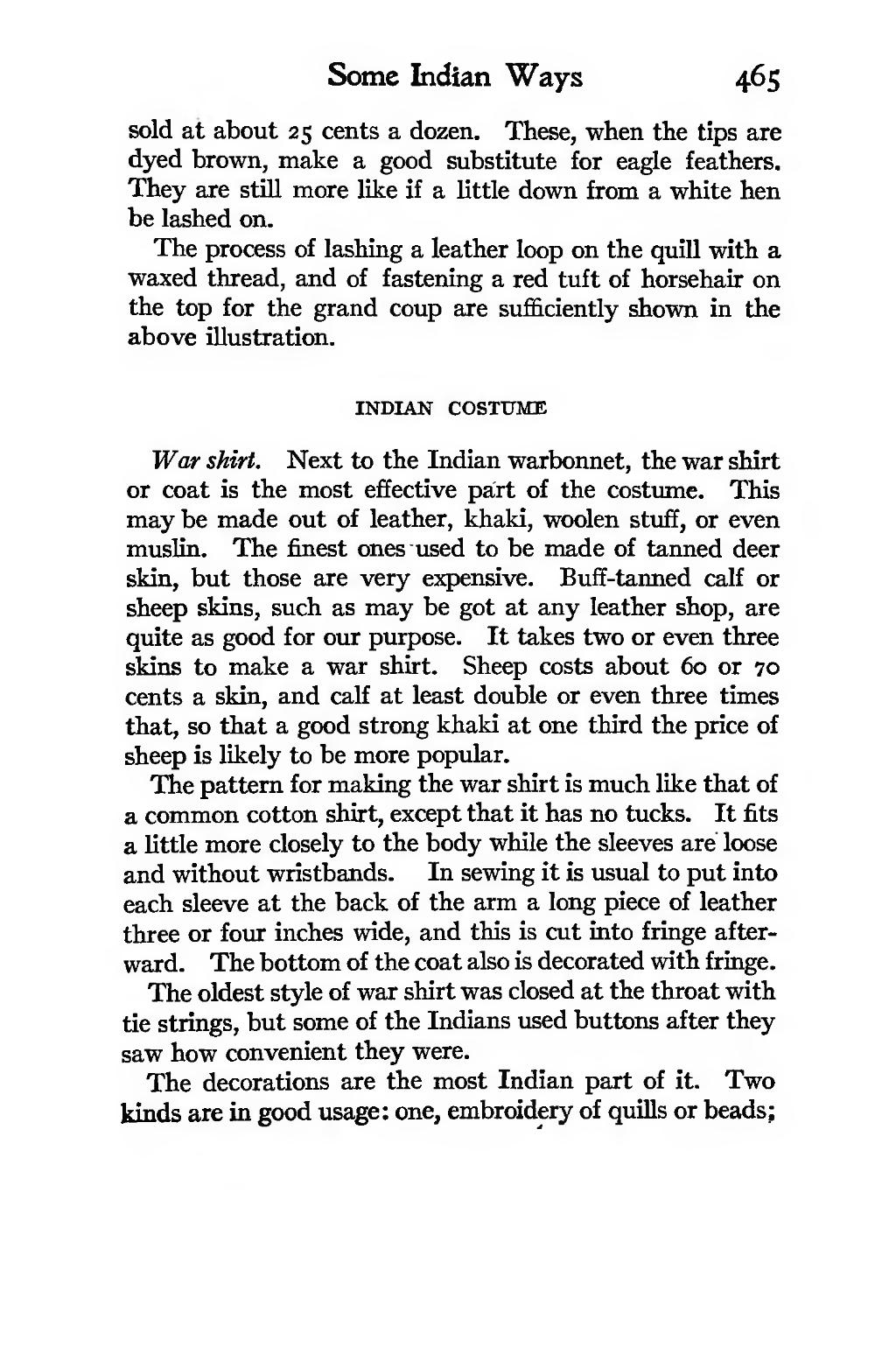Some Indian Ways 465 sold at about 25 cents a dozen. These, when the tips are dyed brown, make a good substitute for eagle feathers. They are still more like if a little down from a white hen be lashed on. The process of lashing a leather loop on the quill with a waxed thread, and of fastening a red tuft of horsehair on the top for the grand coup are sufl&ciently shown in the above illustration. INDIAN COSTUME War shirt. Next to the Indian warbonnet, the war shirt or coat is the most effective part of the costume. This may be made out of leather, khaki, woolen stuff, or even muslin. The finest ones used to be made of tanned deer skin, but those are very expensive. Buff-tanned calf or sheep skins, such as may be got at any leather shop, are quite as good for our purpose. It takes two or even three skins to make a war shirt. Sheep costs about 60 or 70 cents a skin, and calf at least double or even three times that, so that a good strong khaki at one third the price of sheep is likely to be more popular. The pattern for making the war shirt is much like that of a common cotton shirt, except that it has no tucks. It fits a little more closely to the body while the sleeves are loose and without wristbands. In sewing it is usual to put into each sleeve at the back of the arm a long piece of leather three or four inches wide, and this is cut into fringe after- ward. The bottom of the coat also is decorated with fringe. The oldest style of war shirt was closed at the throat with tie strings, but some of the Indians used buttons after they saw how convenient they were. The decorations are the most Indian part of it. Two kinds are in good usage: one, embroidery of quills or beads;
Stránka:book 1913.djvu/487
Z thewoodcraft.org
Tato stránka nebyla zkontrolována
